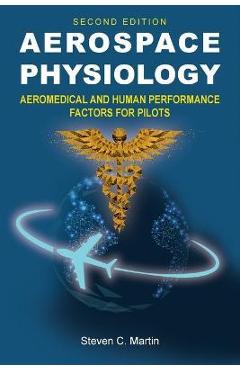
Aerospace physiology (also known as flight or aviation physiology, human factors, or aeromedical factors) is the scientific discipline studying the effects of flight conditions on human physiological and cognitive systems teaching aviators to work and function at peak efficiency in the abnormal environment of flight.
This information is introduced to pilots throughout their training and includes hypoxia, spatial disorientation, visual illusions, fatigue, trapped gases, and many others.
Unfortunately, all of these issues still create incidents and accidents for pilots on a regular basis even today.
The reason for this disparity is pilots may know about the information but fail to understand it completely.
This book will transform a pilots potential misinterpretation of this subject matter into definitive action on the flight deck.
The most current, authoritative, and comprehensive resource on this critical subject is Aerospace Physiology: Aeromedical and Human Performance Factors in Aviation (Second Edition).
This book provides professional-grade information for enhancing safety-of-flight for all pilot experience levels.
The book was written for use in academic settings and is currently the preferred text on flight physiology for the world-renowned University of North Dakotas John D.
Odegard School of Aerospace Sciences, plus other university aviation programs.
The books twenty-two chapters follow a logical presentation format, with each chapter thoroughly discussing the topic in understandable language, followed by core competency questions.
Each topic details the environmental causes, potential physiological & cognitive responses, plus effective and proven anticipation & mitigation strategies.
The book uses the most recent research and experience-based information combined with current aviation incidents and accidents that illustrate how these issues present themselves in realistic flight environments, followed by discussions on how those events may have been prevented.
The information in this book is based on Mr.
Martins thirty years of military and civilian aviation experience, as well as modeled after the US Air Forces Physiological Training Program for pilots and the comprehensive European Union Aviation Safety Agencys (EASA) flight physiology human performance standards.
Using Aerospace Physiology: Aeromedical and Human Performance Factors for Pilots (Second Edition) as your learning or teaching resource will elevate your standard of training.
The Coastal Kitchen
222.92 Lei
Bryan Appleyard
111.32 Lei
Patricia Williams Dockery
48.90 Lei
Sally Lloyd-Jones
61.33 Lei
Martin Luther King
132.53 Lei
Deanna F. Cook
161.77 Lei
Gretchen Ronnevik
88.98 Lei